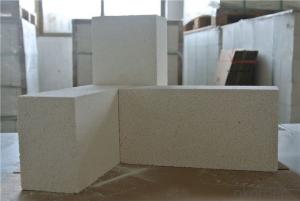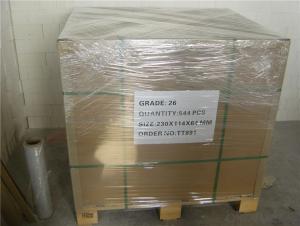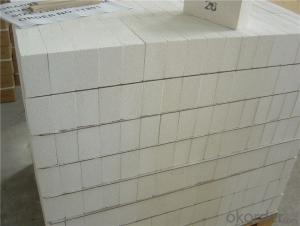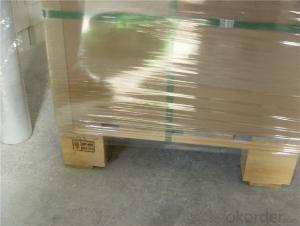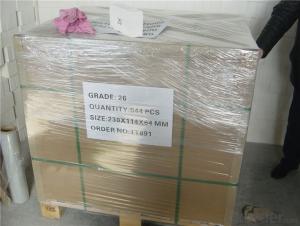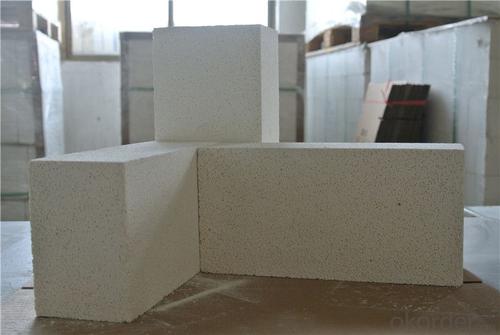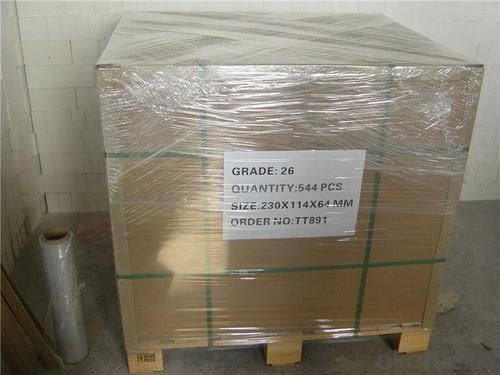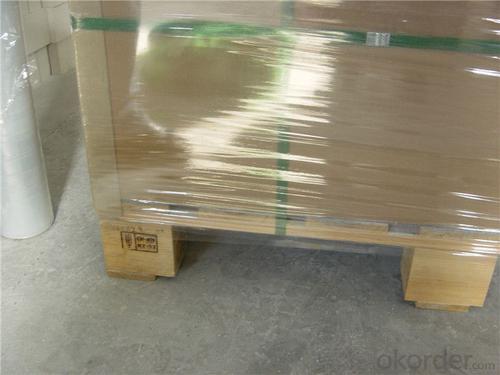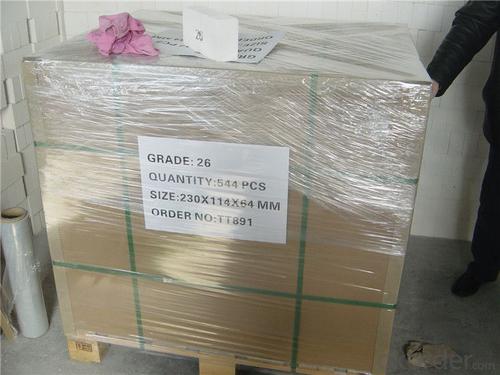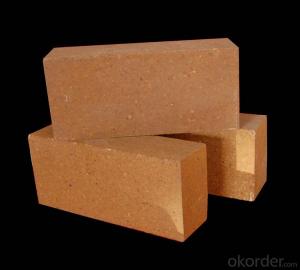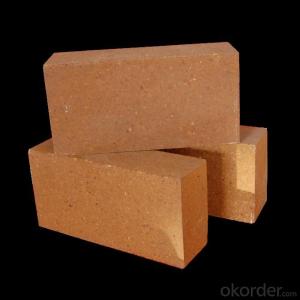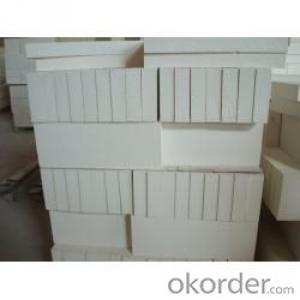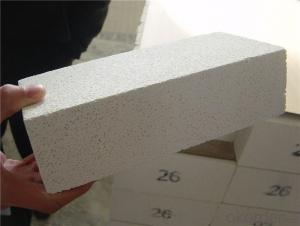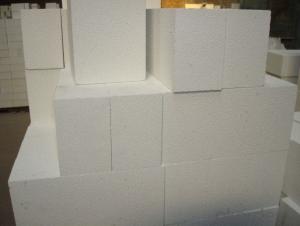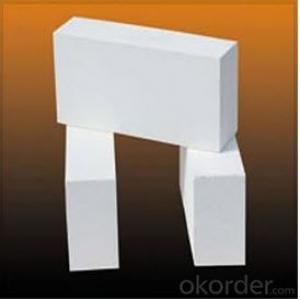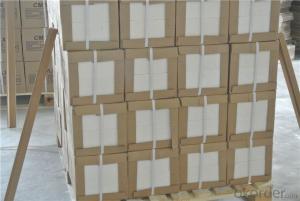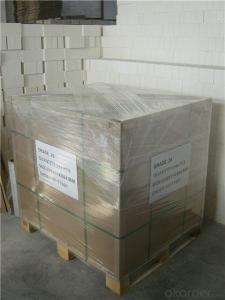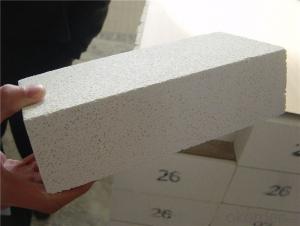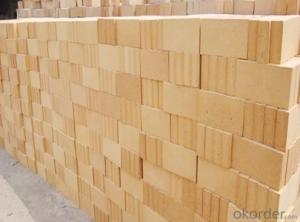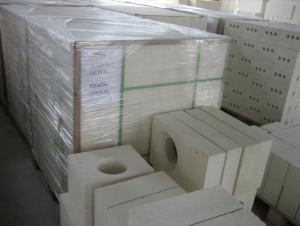Insulating Fire Brick - Refractory Lightweight Insulation Fire Clay Brick for Heating Furnace
- Loading Port:
- Shanghai
- Payment Terms:
- TT OR LC
- Min Order Qty:
- 1 m.t.
- Supply Capability:
- 1000 m.t./month
OKorder Service Pledge
OKorder Financial Service
You Might Also Like
Thermal Insulation Fire Clay Brick
Refractory brick is a block of refractory ceramic material used in lining furnaces, kilns, fireboxes, and fireplaces.
We provide high quality Refractory Fire Bricks that are used on wide range in the various industries like Cement, Glass and Steel. Refractory Fire Bricks are provided as per the quantity and specifications required by the customers. We provide an extensive range of Refractory Fire Bricks at reasonable prices that depend upon the quantity ordered.
Application
Insulating Fire Brick are used for the lining of converter, alternating current arc furnace, direct Current arc furnace and the ladle slag line, etc.
Company Advantage
(1)Long Insulating Fire Brick manufacture history: 25 years manufacturer
(2)Advanced equipment
(3)Diversification of production standards: ISO ANSI FEPA JIS ASTM
(4)Flexible payment: T/T L/C D/P D/A
(5)Professional marketing team and after-sale service
Insulating Fire Brick main feature:
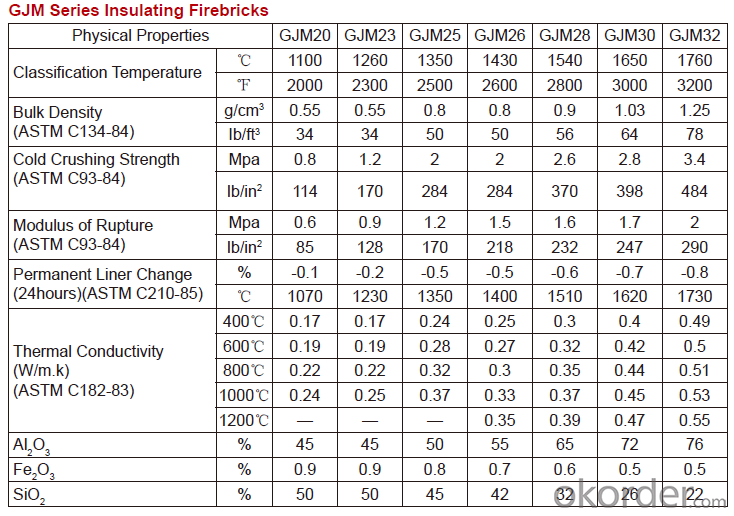
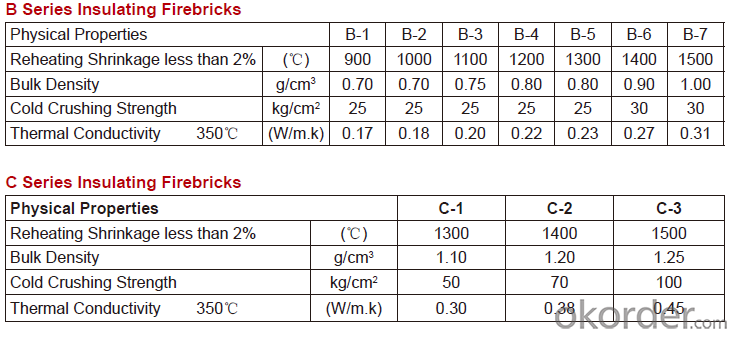
Equipment
1 unit of Ceramic Abrasive (SG Abrasive) pilot production line
2 units of Compact grain Abrasive pilot production lines
1 unit of high-end coated abrasives (abrasive cloth) production line
2 units of Boron Carbide production lines
3 large flexible crushing and sieving lines for grit production lines
6 units of 5000KVA-10000KVA dumping type electric arc furnaces for Brown Fused Alumina fusion
Q1 What’s the transport method?
A1 FCL delivery goods with wooden pallet or wooden case by sea; If LCL delivery, must with wooden case; Sometimes need open top, flat rack or bulk cargo.
Q2 What’s the required payment term?
A2 Generally 30% TT as the prepayment, 70% TT before delivery. If need, 100% Irrevocable Letter of Credit or negotiation.
Q3 Which country are our products exported to?
A3 Apart from entire Chinese market, the US, Russia, Japan, Korea, Australia and some Southeast Asian Nations.
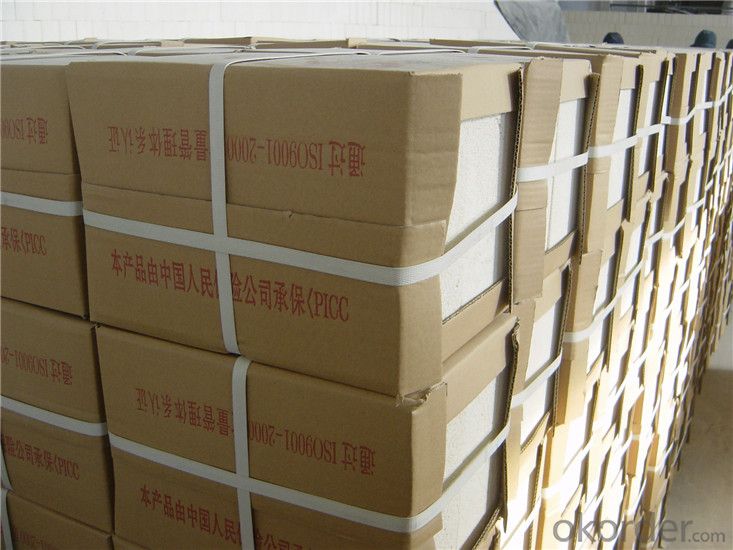
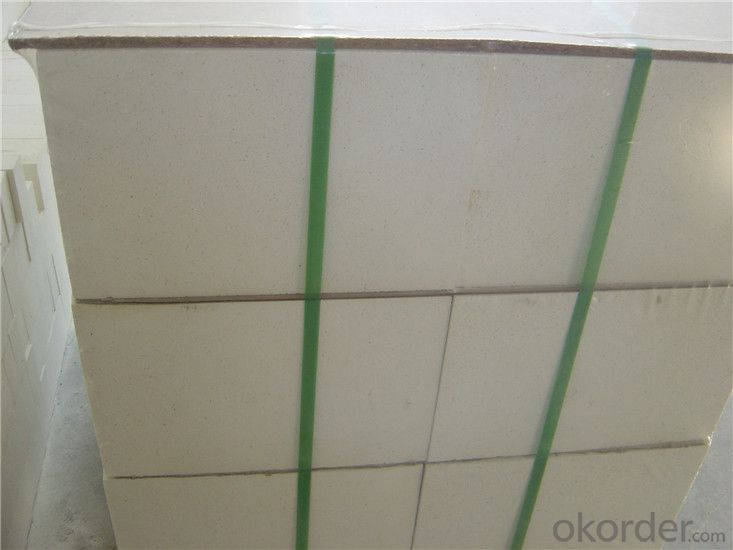
- Q: Can insulating fire bricks be used in the construction of boilers for power plants?
- Yes, insulating fire bricks can be used in the construction of boilers for power plants. These bricks have excellent insulating properties, which help to retain heat and increase energy efficiency in the boilers. Additionally, their lightweight nature reduces the overall weight of the construction, making them a suitable choice for power plant boilers.
- Q: Do insulating fire bricks require a curing period before use?
- Yes, insulating fire bricks typically require a curing period before use. This is because during the manufacturing process, these bricks are exposed to high temperatures which can cause the release of moisture and volatile compounds. Curing involves slowly heating the bricks to gradually remove any remaining moisture and volatile substances. This process helps to ensure that the bricks are fully dried and stabilized before they are subjected to the intense heat of a fire. The curing period can vary depending on the type and thickness of the bricks, but it generally involves gradually increasing the temperature over several days or weeks. Failure to properly cure insulating fire bricks can lead to cracking, spalling, and reduced thermal efficiency. Therefore, it is important to follow the manufacturer's recommendations and allow for an appropriate curing period before using these bricks in high-temperature applications.
- Q: Can insulating fire bricks be used in industrial furnaces?
- Yes, insulating fire bricks can be used in industrial furnaces. Insulating fire bricks are designed to withstand high temperatures and provide excellent insulation, making them suitable for use in various types of industrial furnaces.
- Q: How do insulating fire bricks compare to other types of refractory materials?
- IFBs, or insulating fire bricks, are refractory materials specially designed for their high insulating properties. They have several advantages when compared to standard fire bricks or castable refractories. First and foremost, IFBs have lower thermal conductivity than other refractory materials. This means they are more effective at preventing heat loss and providing insulation for high-temperature applications. Their low thermal conductivity allows them to retain heat within furnaces or kilns, resulting in reduced energy consumption and improved efficiency. Additionally, IFBs are lightweight, making them easier to handle, transport, and install. Their lightweight nature also reduces the overall weight of the refractory lining, which can be advantageous in certain situations. Another benefit of IFBs is their ability to withstand rapid temperature changes. They exhibit good thermal shock resistance, meaning they can endure sudden temperature fluctuations without cracking or spalling. This property is particularly valuable in applications with frequent heating and cooling cycles. Furthermore, IFBs possess a high level of chemical resistance. They can withstand corrosive environments and chemical attacks, making them suitable for various applications involving acids, alkalis, and other aggressive substances. However, IFBs do have limitations. Their lower density compared to standard fire bricks means they are less durable and have lower mechanical strength. Therefore, they might not be suitable for applications that require high load-bearing capacity or are prone to heavy abrasion. To summarize, IFBs offer excellent thermal insulation, lightweight properties, good thermal shock resistance, and high chemical resistance. Nonetheless, their lower density and reduced mechanical strength may restrict their usage in certain scenarios. It is crucial to carefully consider the specific requirements of the application before selecting IFBs or alternative refractory materials.
- Q: Can insulating fire bricks be used for insulation in cold storage facilities?
- Yes, insulating fire bricks can be used for insulation in cold storage facilities. These bricks have excellent thermal properties and can effectively prevent heat transfer, making them suitable for maintaining low temperatures in cold storage facilities.
- Q: Can insulating fire bricks be used in the construction of radiant tubes?
- Insulating fire bricks are indeed applicable for the construction of radiant tubes. These bricks are specifically crafted to provide exceptional thermal insulation, which makes them extremely suitable for scenarios where heat preservation is crucial. Radiant tubes, on the other hand, are utilized in environments that endure high temperatures, such as furnaces and kilns, where they are exposed to intense heat. By being able to withstand such elevated temperatures, insulating fire bricks aid in minimizing heat loss, thereby leading to enhanced energy efficiency. Moreover, these bricks' insulating properties also serve to safeguard the radiant tubes against thermal shock and extend their lifespan. In summary, incorporating insulating fire bricks into the construction of radiant tubes elevates their overall performance and durability.
- Q: Can insulating fire bricks be used in the construction of smelting furnaces?
- Yes, insulating fire bricks can be used in the construction of smelting furnaces. Insulating fire bricks are designed to withstand high temperatures and provide excellent insulation, making them ideal for smelting furnaces. These bricks have low thermal conductivity, which helps to minimize heat loss and maintain a consistent temperature inside the furnace. Additionally, insulating fire bricks are lightweight, making them easier to handle and install. Overall, the use of insulating fire bricks in smelting furnace construction can improve energy efficiency, reduce operating costs, and enhance the overall performance of the furnace.
- Q: Are insulating fire bricks resistant to saltwater?
- Insulating fire bricks generally lack resistance to saltwater. Saltwater comprises substantial amounts of salt, leading to the gradual corrosion and deterioration of the material. To ensure corrosion resistance, it is advisable to opt for refractory materials explicitly engineered for enduring saltwater environments.
- Q: Are insulating fire bricks suitable for use in residential fireplaces?
- Insulating fire bricks can be suitable for use in residential fireplaces, depending on the specific requirements and preferences of the homeowner. Insulating fire bricks are designed to have a low thermal conductivity, which means they can effectively retain heat and prevent it from escaping the fireplace. This can result in a more efficient and effective heating of the room, as less heat is lost through the bricks. Additionally, insulating fire bricks are lightweight and easy to handle, making them a convenient option for homeowners who may want to install or replace bricks themselves. They are also durable and resistant to high temperatures, ensuring that they can withstand the intense heat produced by the fire. However, it is important to note that insulating fire bricks may not be the best choice for everyone. Traditional fire bricks are denser and have a higher thermal mass, which means they can absorb and radiate heat for a longer period of time. This can create a more consistent and long-lasting heat output, which some homeowners may prefer. Ultimately, the decision to use insulating fire bricks in a residential fireplace should be based on the specific needs and preferences of the homeowner. Consulting with a professional fireplace installer or seeking advice from a reputable supplier can help ensure that the chosen bricks are suitable for the intended use.
- Q: Can insulating fire bricks be used for insulation in hot blast stoves?
- Insulating fire bricks are suitable for insulation in hot blast stoves due to their ability to withstand high temperatures and provide excellent thermal insulation. These bricks are constructed using lightweight materials with low thermal conductivity, enabling them to effectively retain heat and prevent heat transfer to the surrounding environment. By incorporating insulating fire bricks in hot blast stoves, the internal temperatures can be preserved at high levels while minimizing heat loss. As a result, the stove's energy efficiency is enhanced, and the structure is safeguarded from excessive heat. Consequently, the practice of using insulating fire bricks for insulation in hot blast stoves is widely adopted and proven to be effective.
Send your message to us
Insulating Fire Brick - Refractory Lightweight Insulation Fire Clay Brick for Heating Furnace
- Loading Port:
- Shanghai
- Payment Terms:
- TT OR LC
- Min Order Qty:
- 1 m.t.
- Supply Capability:
- 1000 m.t./month
OKorder Service Pledge
OKorder Financial Service
Similar products
Hot products
Hot Searches
Related keywords
